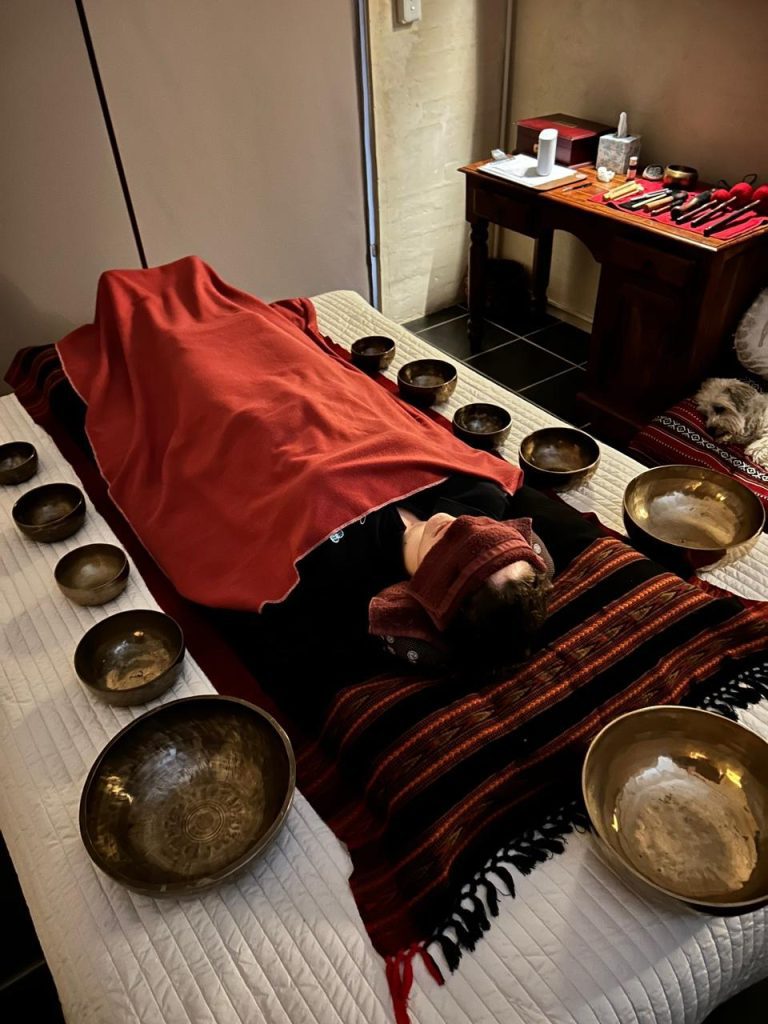Difference Between Sound Healing and Tibetan Singing Bowl Therapy
The Distinctive difference between Sound Healing and Tibetan Singing Bowl Therapy Sound healing and Tibetan singing bowl therapy are two unique modalities that have been used for centuries to promote physical, emotional, and spiritual well-being. While both practices utilize sound to induce relaxation and balance, they have distinct differences in their history, approach, and application. Sound Healing: A Holistic Approach Sound healing is a broad term that encompasses various forms of sound therapy, including music therapy, sound baths, and vibrational medicine. This modality uses a range of instruments, such as tuning forks, gongs, drums, and singing bowls, to create a therapeutic soundscape. Sound healing practitioners often incorporate elements of psychology, neuroscience, and energy medicine to tailor their sessions to individual needs. By stimulating the brain’s default mode network, sound healing can induce deep relaxation, reduce anxiety, and promote cognitive function. Group Sound Healing Sessions Group sound healing sessions are often used in wellness centers, yoga studios, and meditation classes. These sessions typically involve a group of people lying down or sitting in a relaxed position while the practitioner plays various instruments to create a therapeutic soundscape. Group sound healing sessions can be beneficial for promoting relaxation, reducing stress, and fostering a sense of community. Private Tibetan Singing Bowl Therapy: A Personalised Approach Tibetan singing bowl therapy, on the other hand, is often used in private sessions, where the practitioner tailors the treatment to the individual’s specific needs. Private Tibetan singing bowl therapy typically involves the use of multiple bowls, each with its unique tone and vibration, to create a personalized soundscape. The practitioner may use specific bowls and techniques to address the individual’s physical, emotional, or spiritual concerns. The Power of Frequency and Vibration in Tibetan Singing Bowl Therapy Tibetan singing bowl therapy utilizes specific frequencies and vibrations to resonate with the body’s energy centers, or chakras. The bowls produce a range of frequencies, typically between 100-800 Hz, which are believed to correspond to specific chakras and energy pathways in the body. For example: – Lower frequencies (100-200 Hz) are often associated with the root chakra, promoting feelings of grounding and stability.– Mid-range frequencies (200-400 Hz) are often associated with the heart chakra, promoting emotional balance and compassion.– Higher frequencies (400-800 Hz) are often associated with the crown chakra, promoting spiritual connection and enlightenment. The vibrations and frequencies produced by the bowls are believed to have a range of therapeutic effects, including reducing stress and anxiety, balancing the body’s energy centers, and promoting deep relaxation. Key Differences: History, Philosophy, and Application One of the primary differences between sound healing and Tibetan singing bowl therapy lies in their historical and philosophical roots. Sound healing is a more contemporary modality that draws from various cultural and scientific traditions, while Tibetan singing bowl therapy is deeply rooted in Tibetan culture. In terms of application, sound healing is often used in group settings, while Tibetan singing bowl therapy is often used in private sessions, allowing for a more personalized and tailored approach. The Science Behind the frequency, vibration and sound. Research has shown that sound healing and Tibetan singing bowl therapy can have a profound impact on the body’s physiological and psychological state. The vibrations and tones produced by these modalities can alter brainwave activity, lower cortisol levels, and reduce inflammation. By stimulating the brain’s default mode network, these practices can induce deep relaxation, reduce stress, and promote overall well-being. In conclusion, sound healing and Tibetan singing bowl therapy are two distinctly different modalities that each offers their own unique benefits and applications. While both practices utilize sound to promote relaxation and balance, they differ in their history, philosophy, and approach. By understanding the specific frequencies and vibrations used in Tibetan singing bowl therapy, individuals can better appreciate the therapeutic effects of this modality and choose the approach that best suits their needs for healing, self-discovery, and spiritual growth.


